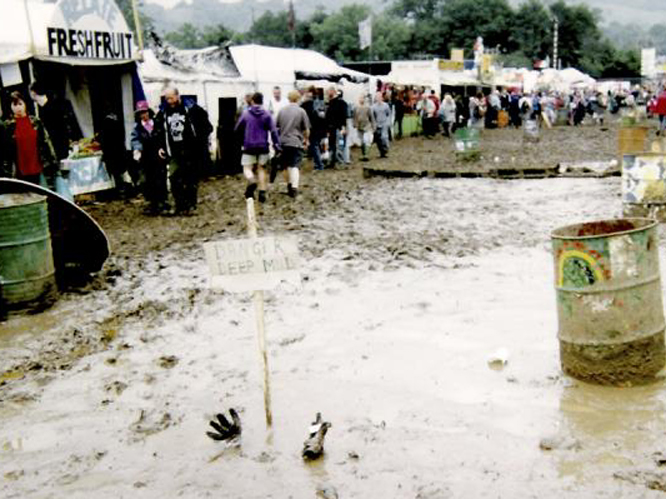More about: Glastonbury Festival
Since its beginning in 1970, Glastonbury has steadily got bigger and bigger over the past 43 years to become the most iconic festival on the planet. Starting with just 1500 at tickets for just £1, Glasto now draws over 170,000 to Pilton in Somerset each summer for a celebration of music, art, and culture.
Somehow, even after demanding performances from some of the biggest and most seminal acts on the planet to perform across it's many stages, Glasto has kept an inkling of its hippie roots. The idea to start the festival was that of Michael Eavis, who owns Worthy Farm in Pilton, and was inspired by a festival he attended in 1969 where Led Zeppelin performed in Bath.
Glastonbury has changed a lot from the price to the size, but it's obviously got something that keeps people flocking to Somerset every year. As we draw closer to the 2014 event, we have taken a look every event since 1970, and have pulled together weird and wonderful facts from every year.
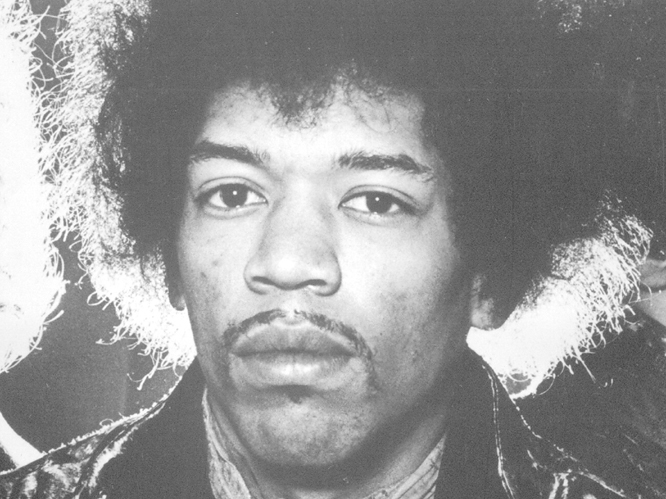
1970: The first festival, and originally called Glastonbury Fayre. Costing £1 (with free milk included) Glastonbury 1970 was held the day after Jimi Hendrix died. Around 1500 people attended, and it was headlined by Tyrannosaurus Rex - stepping in for the Kinks who failed to show up.
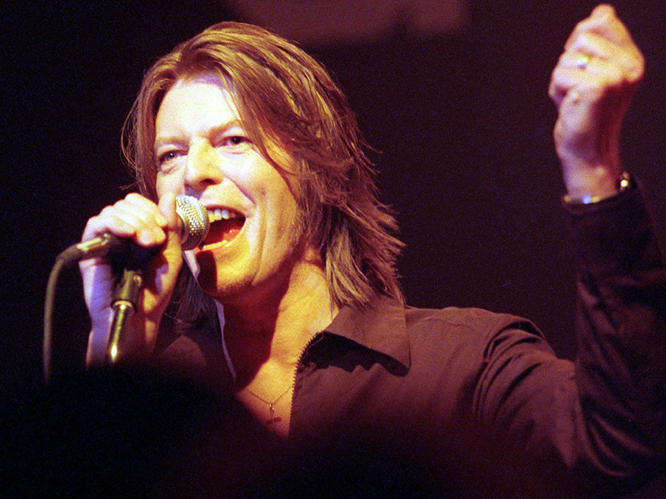
1971: Back for a second year Glastonbury Fayre had Hawkwind and Traffic headlining, while David Bowie played his first, of three appearances (to date), on Worthy Farm.
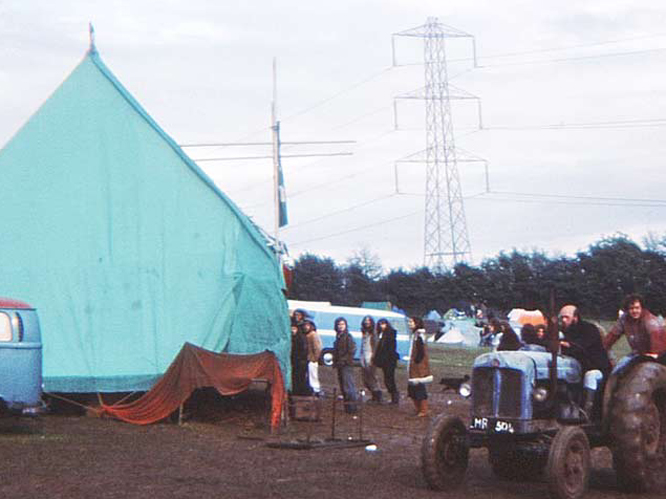 1978: This, the third year of Glastonbury Fayre, wasn't planned per se. People showed up, en route from Stone Henge as they heard a festival was set to take place. After a discussion, it was decided that indeed, a festival would happen. It was powered by a caravan and a makeshift stage, there were no headline acts as such.
1978: This, the third year of Glastonbury Fayre, wasn't planned per se. People showed up, en route from Stone Henge as they heard a festival was set to take place. After a discussion, it was decided that indeed, a festival would happen. It was powered by a caravan and a makeshift stage, there were no headline acts as such.
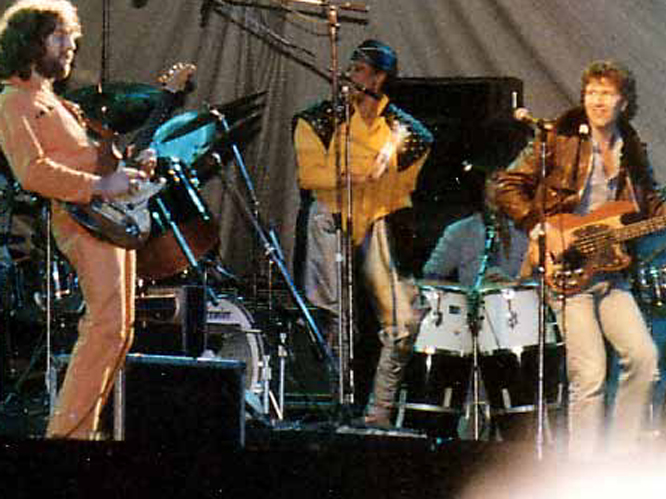
1979: Grown to a three day event, Eavis raised funds for this by securing a bank loan against the deeds to his farm. Peter Gabriel was one of the headliners. However, unfortunately the festival was a huge financial loss and thus 1980 there was no Glastonbury. But it was back in 1981 with 'proper management'.
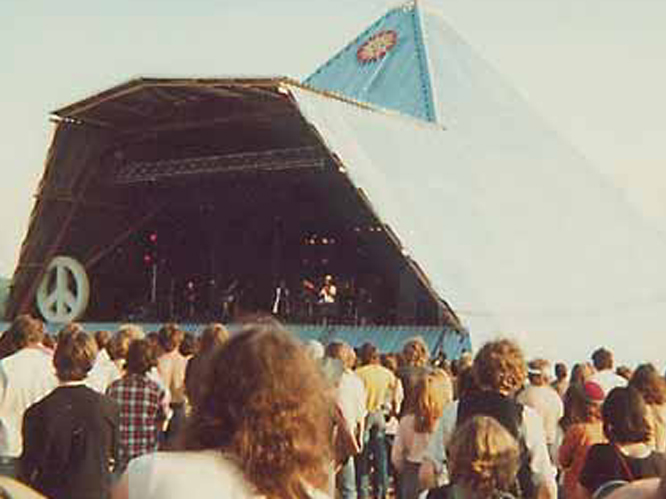 1981: Back with a new name, Glastonbury Festival, 1981 saw the arrival of a permanent Pyramid Stage, which when not used as a stage was a cow shed. Hawkwind were among the bands performing.
1981: Back with a new name, Glastonbury Festival, 1981 saw the arrival of a permanent Pyramid Stage, which when not used as a stage was a cow shed. Hawkwind were among the bands performing.
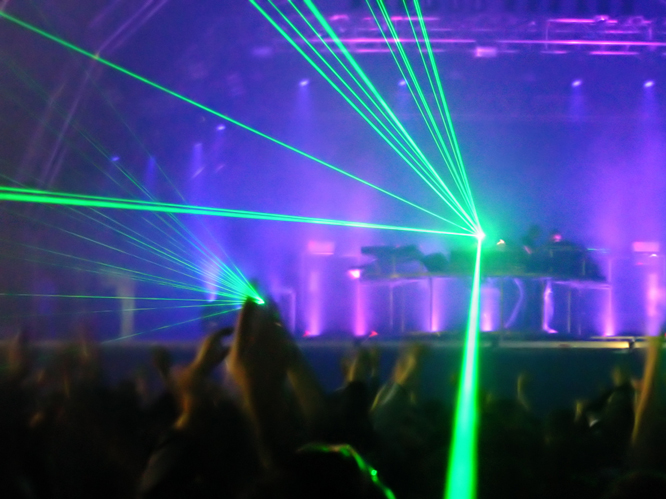 1982: This year Glastonbury Festival was involved with the Mid-Somerset and Western Region 'Campaign for Nuclear Disarmament'. To deter an anti CND plane, Festival organiser Michael Eavis aimed a £70 firework at it, in order to chase it away. There was also the festival's first laser light show was backed by backed Tubeway Army's iconic 'Are Friends Electric'.
1982: This year Glastonbury Festival was involved with the Mid-Somerset and Western Region 'Campaign for Nuclear Disarmament'. To deter an anti CND plane, Festival organiser Michael Eavis aimed a £70 firework at it, in order to chase it away. There was also the festival's first laser light show was backed by backed Tubeway Army's iconic 'Are Friends Electric'.
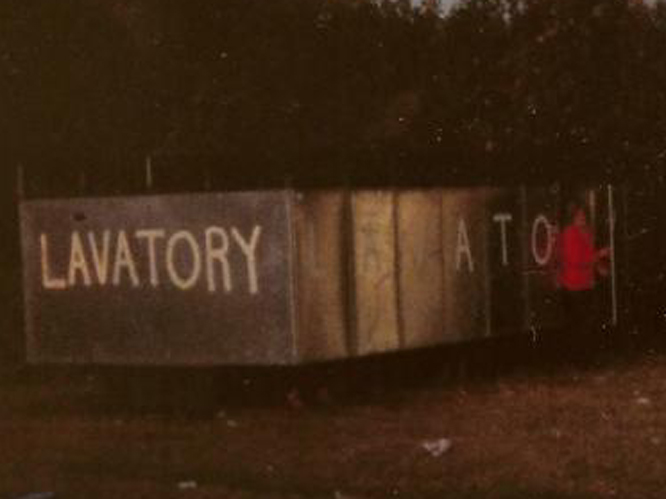
1983: This was the first year of proper toilets! And the first of Glastonbury's Radio Station Radio Avalon broadcast the three day festival.

1984: This year The Smiths played, which led to uproar amongst those who attended, who questioned whether 'popular' bands should perform on the Pyramid Stage. They do look a little frightened in this photo from backstage, and Johnny Marr himself would later himself admit: "We were out of our depth."
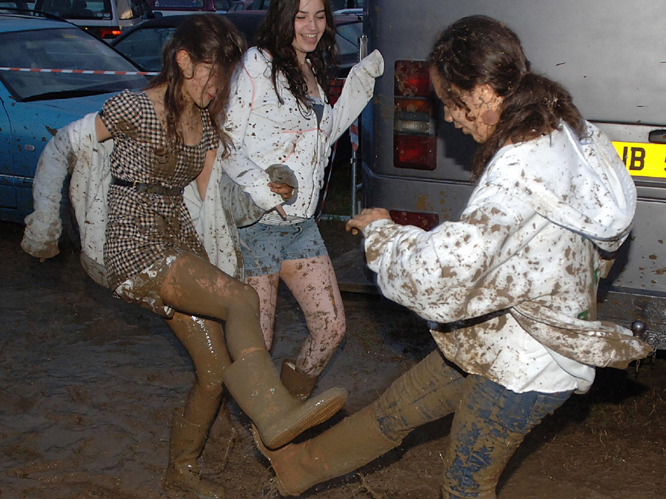
1985: The festival was now so big that it took over neighbouring land on Cockmill Farm, to add another 100 acres. It was also hit with seriously bad weather. However Michael Eavis, said he was pleased that "we have had the mud bath and proved we can still cope with the conditions." This is just as well, for there have been countless mud-filled years ever since.
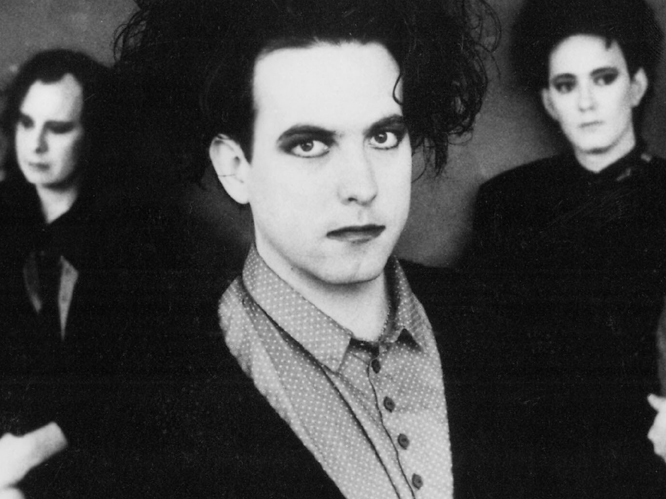
1986: The Cure performed the Pyramid Stage, and also, in contrast, to show the spectrum of musical and artistic talents catered to by Glastonbury, it was the inaugural year of the classical tent curated by composer (and Daft Punk collaborator) John Williams.
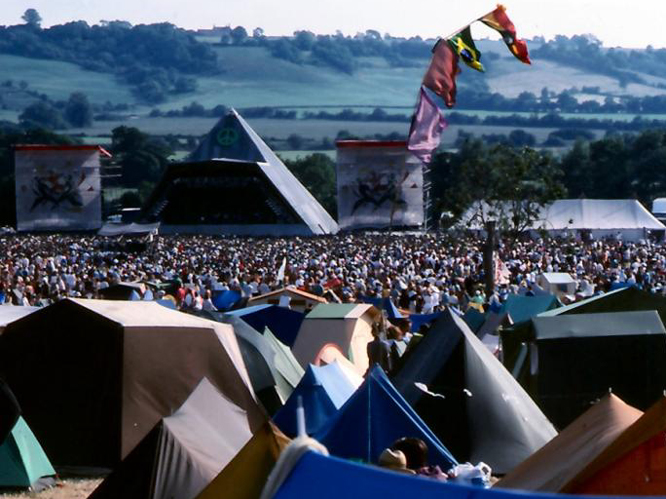 1987: By now the festival was gathering a crowd of over 60,000 - huge compared to the 1,500 who attended the first, but who pale in comparison to over 170,000 who now attend.
1987: By now the festival was gathering a crowd of over 60,000 - huge compared to the 1,500 who attended the first, but who pale in comparison to over 170,000 who now attend.
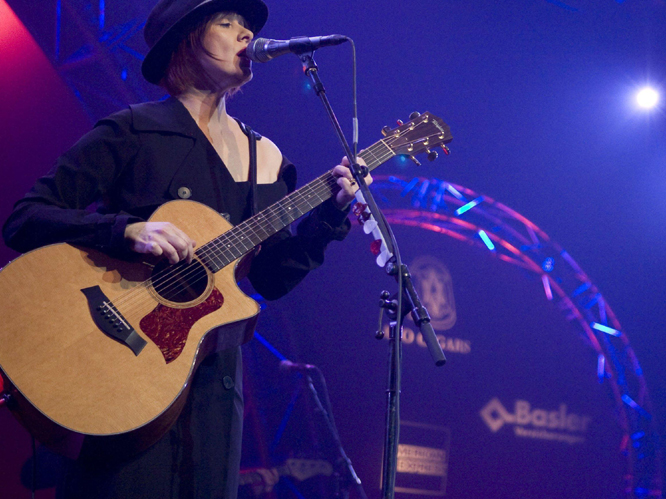 1989: Suzanne Vega, who headlined the Friday night, played wearing a bulletproof vest, after death threats were directed at her and her bassist. Not that that deterred her, above she is pictured performing nearly two decades later - and will be back this year.
1989: Suzanne Vega, who headlined the Friday night, played wearing a bulletproof vest, after death threats were directed at her and her bassist. Not that that deterred her, above she is pictured performing nearly two decades later - and will be back this year.
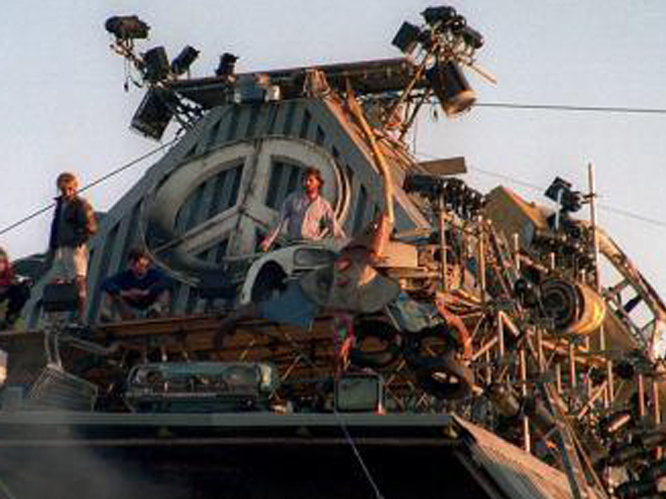 1990: 20 years since the first festival and the festival had increased almost beyond all recognition. Now boasting theatre and arts as well as musical performers, the festival was re-titled 'Glastonbury Festival for Contemporary Performing Arts'. French theatre troupe Archaos performed atop the Pyramid Stage on both Friday and Saturday nights. The numbers attending topped 70,000, and security became noticeably tighter - for better or worse.
1990: 20 years since the first festival and the festival had increased almost beyond all recognition. Now boasting theatre and arts as well as musical performers, the festival was re-titled 'Glastonbury Festival for Contemporary Performing Arts'. French theatre troupe Archaos performed atop the Pyramid Stage on both Friday and Saturday nights. The numbers attending topped 70,000, and security became noticeably tighter - for better or worse.
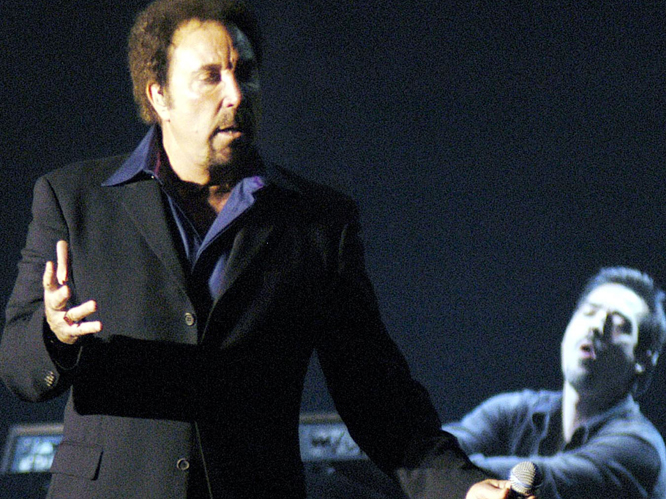
1992: The released line up had a slot named 'Special Guest' which provoked much curiosity. Tom Jones turned out to be the performer, and was apparently 'fantastic'. HURGH!
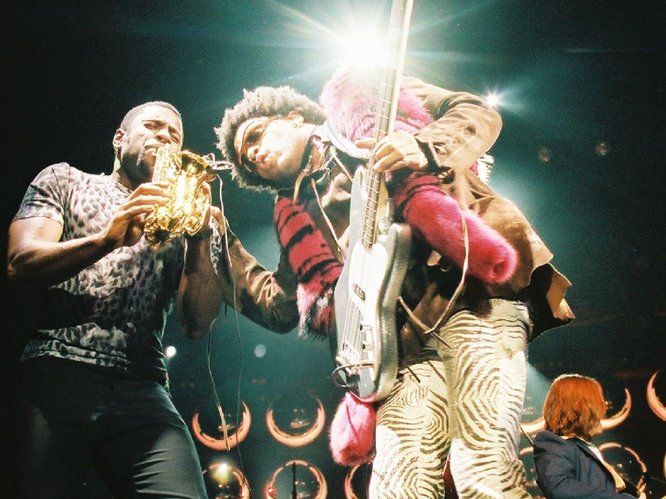 1993: Lenny Kravitz stepped in to the headline slot when confirmed performers Red Hot Chili Peppers failed to turn up.
1993: Lenny Kravitz stepped in to the headline slot when confirmed performers Red Hot Chili Peppers failed to turn up.
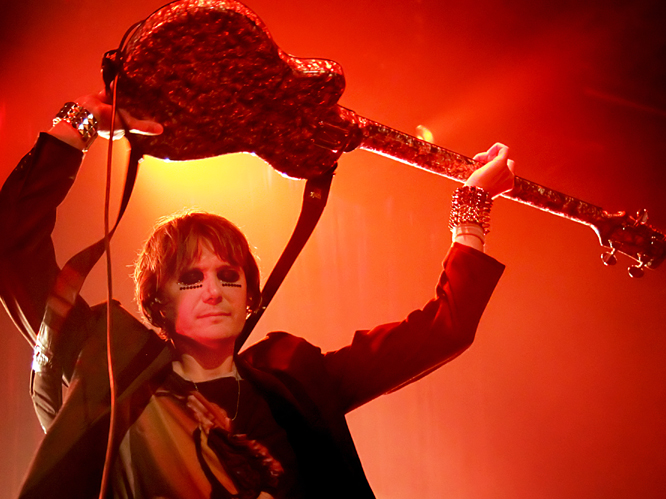 1994: This year, the Pyramid Stage burned down, but a makeshift one was made so the festival could continue. The festival was broadcast by Channel 4, which only added to the festival's growing publicity. A dampner on this weekend was the festival's first fatality - a result of a drugs overdose. But the most memorable thing about 1994 was Manic Street Preachers performance, complete with bassist Nicky Wire's infamous 'joke', when he said "someone should build a bypass over this shithole." It didn't go down well. "It was supposed to be a joke," he said later. "As I was saying it I thought 'this is going to be really funny'. Then this deathly silence descended on the place." Glasto still loves the Manics, though - they've since headlined and will return for one of the most hotly-anticipated performances of 1994.
1994: This year, the Pyramid Stage burned down, but a makeshift one was made so the festival could continue. The festival was broadcast by Channel 4, which only added to the festival's growing publicity. A dampner on this weekend was the festival's first fatality - a result of a drugs overdose. But the most memorable thing about 1994 was Manic Street Preachers performance, complete with bassist Nicky Wire's infamous 'joke', when he said "someone should build a bypass over this shithole." It didn't go down well. "It was supposed to be a joke," he said later. "As I was saying it I thought 'this is going to be really funny'. Then this deathly silence descended on the place." Glasto still loves the Manics, though - they've since headlined and will return for one of the most hotly-anticipated performances of 1994.

1995: The Silver anniversary of Glastonbury was worthy of some celebration. Tickets sold out faster than ever before - within four weeks of going on sale, and Original performers Al Stewart and Keith Christmas returned to perform again. The festival expanded again - opening a Dance Stage which featured Massive Attack (who in later years headlined the festival), System 7 and Eat Static.
1997: This was deemed another 'year of mud' not that that deterred the enthusiastic crowds. This was also the year they introduced solar-heated showers, perfect for mud-splattered revellers.
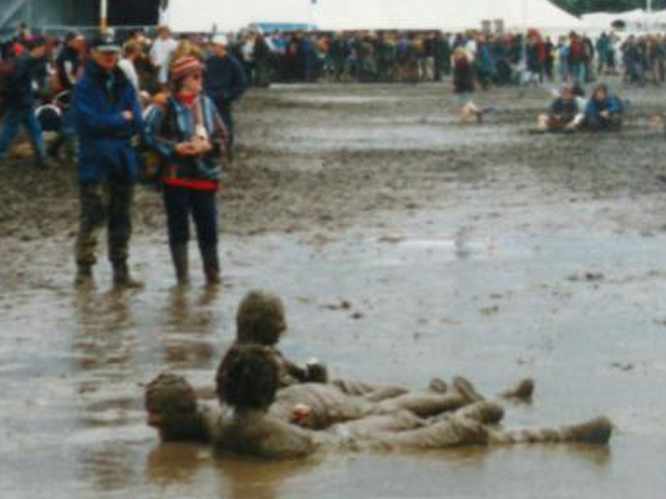 1998: Yet another muddy year - although this gave rise to the sport of mud surfing. It was the biggest festival yet, with over 100,000 attendee's, and 1000 acts over 17 stages which included Robbie Williams, Foo Fighters and Bob Dylan.
1998: Yet another muddy year - although this gave rise to the sport of mud surfing. It was the biggest festival yet, with over 100,000 attendee's, and 1000 acts over 17 stages which included Robbie Williams, Foo Fighters and Bob Dylan.
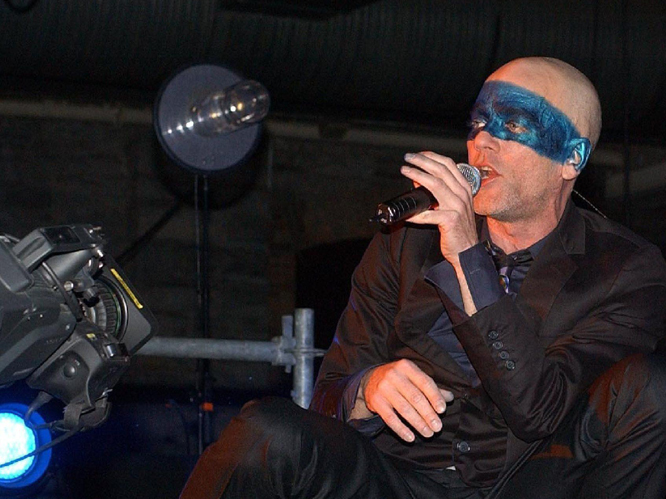 1999: The sun came back! This year was held in the memory of Michael Eavis' wife Jean, who was known as 'Mother Glastonbury'. She was remembered with a fireworks display and a wicker structure. The line-up featured Blondie, REM and Manic Street Preachers (who were allowed back after their haphazard comment years before - but caused a stir and upset Billy Bragg by bringing their own private toilets).
1999: The sun came back! This year was held in the memory of Michael Eavis' wife Jean, who was known as 'Mother Glastonbury'. She was remembered with a fireworks display and a wicker structure. The line-up featured Blondie, REM and Manic Street Preachers (who were allowed back after their haphazard comment years before - but caused a stir and upset Billy Bragg by bringing their own private toilets).
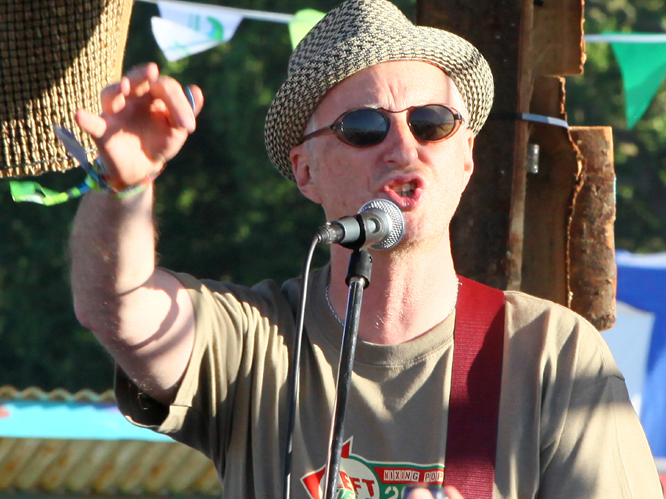 2000: The new millennium brought with it a host of new stages (and a ruined outer fence thanks to hoards of gatecrashers). The new stages included a new Pyramid Stage, (over 100ft tall), a left-wing political stage, Leftfield, and outdoor dance venue The Glade featured for the first time. Billy Bragg, who's frequented the festival, played the Leftfield stage which opposes apathy and encourages left-wing politics with speakers and activist performers.
2000: The new millennium brought with it a host of new stages (and a ruined outer fence thanks to hoards of gatecrashers). The new stages included a new Pyramid Stage, (over 100ft tall), a left-wing political stage, Leftfield, and outdoor dance venue The Glade featured for the first time. Billy Bragg, who's frequented the festival, played the Leftfield stage which opposes apathy and encourages left-wing politics with speakers and activist performers.
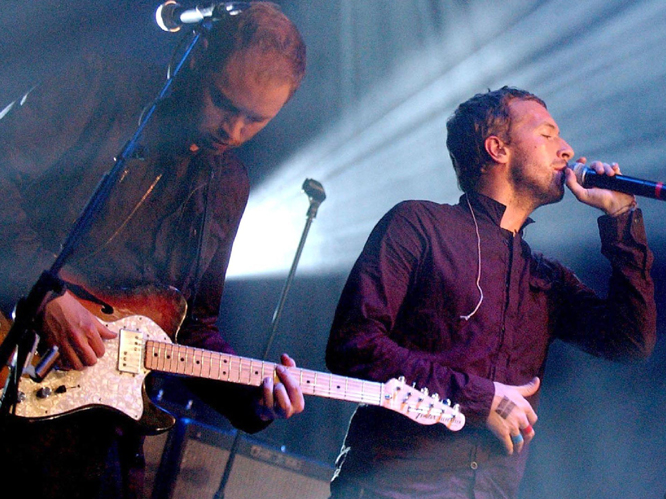 2002: To deter gatecrashers, who had been a problem for almost every festival so far, a steel fence was put up, letting only the 140,000 ticketed guests in. Among the music, arts, and general vibe of the festival a new venue Lost Vagueness brought a silver service restaurant, encouraging guests to add a Glastonbury spin on evening wear. Coldplay were one of the headling acts, and the crowd's gentle sing along almost brought a tear to Chris Martin's eye: "Best choir I ever heard in my life," he choked during the show.
2002: To deter gatecrashers, who had been a problem for almost every festival so far, a steel fence was put up, letting only the 140,000 ticketed guests in. Among the music, arts, and general vibe of the festival a new venue Lost Vagueness brought a silver service restaurant, encouraging guests to add a Glastonbury spin on evening wear. Coldplay were one of the headling acts, and the crowd's gentle sing along almost brought a tear to Chris Martin's eye: "Best choir I ever heard in my life," he choked during the show.
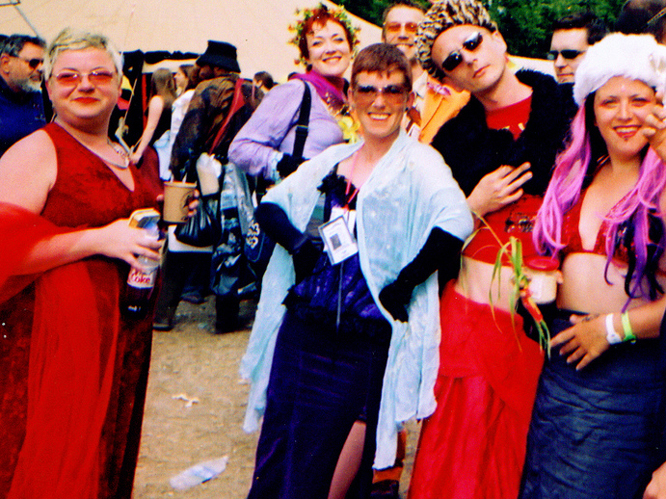
2003:The Best Glastonbury to date? Crime free, gatecrash free (relatively), rain free, and with a cracking line up. Also over £1 million was raised for charitable causes. The Lost Vagueness, an off the wall venue which in amidst festival madness allowed for silver service dining and evening wear, facilitating ballroom dancing was growing in popularity too!
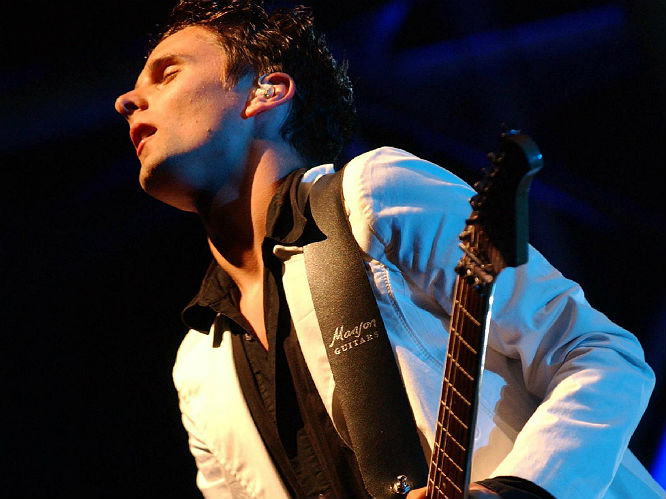 2004: This year saw the launch of the Unsigned performance competition, giving new bands the chance to perform at the festival. The festival screened the 2004 England vs Portugal European Cup match, and 65,000 people are estimated to have watched the game - more than who were at the stadium watching the game. It wasn't all good news though. Despite Muse stepping up to the major leagues to headline the Pyramid Stage for the first time, their glorious set was marred by tragedy when drummer Dom Howard's father passed away shortly after seeing them.
2004: This year saw the launch of the Unsigned performance competition, giving new bands the chance to perform at the festival. The festival screened the 2004 England vs Portugal European Cup match, and 65,000 people are estimated to have watched the game - more than who were at the stadium watching the game. It wasn't all good news though. Despite Muse stepping up to the major leagues to headline the Pyramid Stage for the first time, their glorious set was marred by tragedy when drummer Dom Howard's father passed away shortly after seeing them.
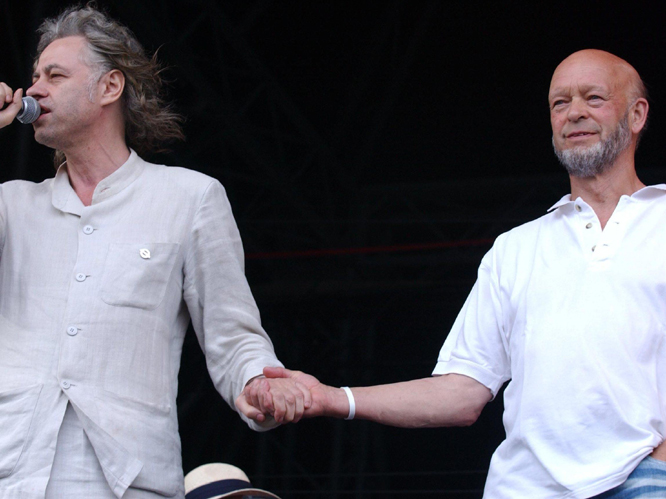
2005: Mud glorious mud again... Two months of rain in just hours caused floods that could have been a disaster, if not for the drainage system installed the previous year. Celebrating the Make Poverty History campaign, festival creator Michael Eavis, Bob Geldof, and Greenpeace took to the stage and declared: "This year, let's make poverty history and get clean energy for our future."
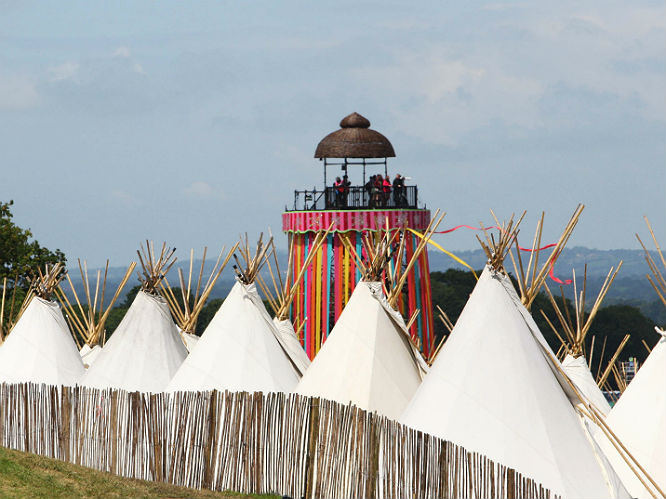
2007: This year the festival expanded again, with Emily Eavis opening her own area, The Park Stage. The Who pulled out all the stops, and triumphantly closed the festival on the Sunday night.
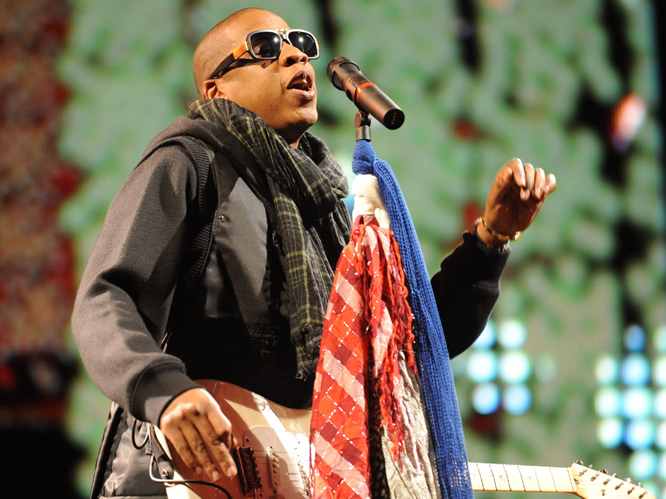 2008: This was a rare year where tickets didn't sell out within hours. However, a last minute boost in the weather was followed by a surge in ticket sales to ensure a sellout festival. Jay-Z performed, and was received well, despite early criticisms that 'rap didn't have a place at Glastonbury.'
2008: This was a rare year where tickets didn't sell out within hours. However, a last minute boost in the weather was followed by a surge in ticket sales to ensure a sellout festival. Jay-Z performed, and was received well, despite early criticisms that 'rap didn't have a place at Glastonbury.'
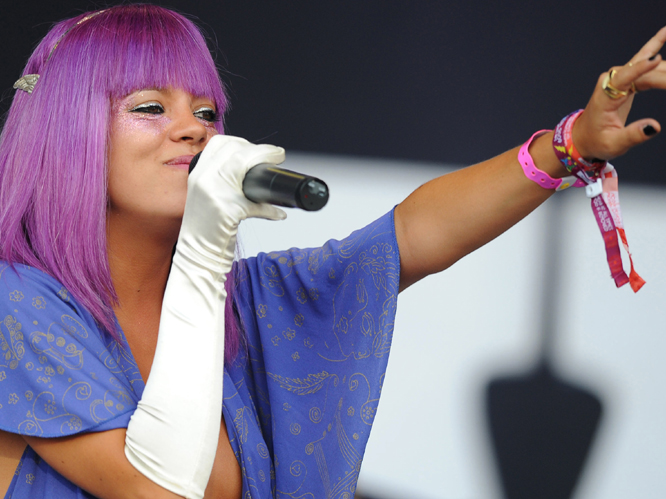 2009: As the death of Michael Jackson broke, the entire festival paid homage to the King of Pop. Lily Allen performed wearing a white glove.
2009: As the death of Michael Jackson broke, the entire festival paid homage to the King of Pop. Lily Allen performed wearing a white glove.
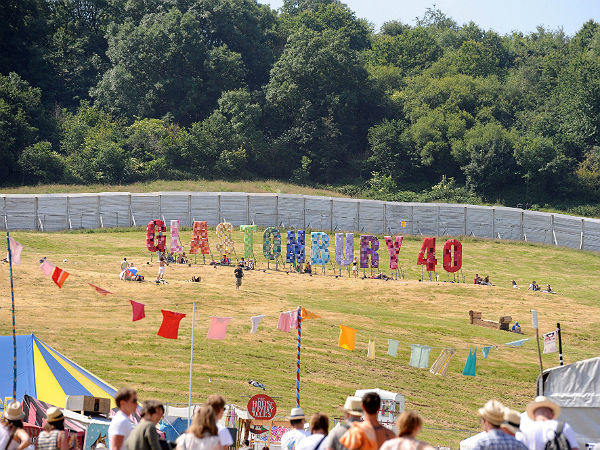 2010: Happy 40th Glastonbury! To honour the anniversary of the festival, event organiser Michael Eavis joined Stevie Wonder on the Pyramid Stage to sing 'Happy Birthday'. Eavis said: "It has been the best party for me of 2010. The weather, the full moon and last night a crowd of 100,000 people, every single one enjoying themselves." Doctor Who actor Matt Smith joined Orbital on stage to play a remix of the TV show theme tune.
2010: Happy 40th Glastonbury! To honour the anniversary of the festival, event organiser Michael Eavis joined Stevie Wonder on the Pyramid Stage to sing 'Happy Birthday'. Eavis said: "It has been the best party for me of 2010. The weather, the full moon and last night a crowd of 100,000 people, every single one enjoying themselves." Doctor Who actor Matt Smith joined Orbital on stage to play a remix of the TV show theme tune.
 2011: Like her husband Jay Z several years earlier, Beyonce defied her critics to pull off a truly historic headline performance on the Pyramid Stage - as did Queens Of The Stone Age on the Other Stage. The difference in opinions around the two sets caused a stir between BBC presenters Zane Lowe and Lauren Laverne - causing a storm on Twitter and Lowe leaving early. Oh yeah, and loads of people were left disappointed by U2.
2011: Like her husband Jay Z several years earlier, Beyonce defied her critics to pull off a truly historic headline performance on the Pyramid Stage - as did Queens Of The Stone Age on the Other Stage. The difference in opinions around the two sets caused a stir between BBC presenters Zane Lowe and Lauren Laverne - causing a storm on Twitter and Lowe leaving early. Oh yeah, and loads of people were left disappointed by U2.
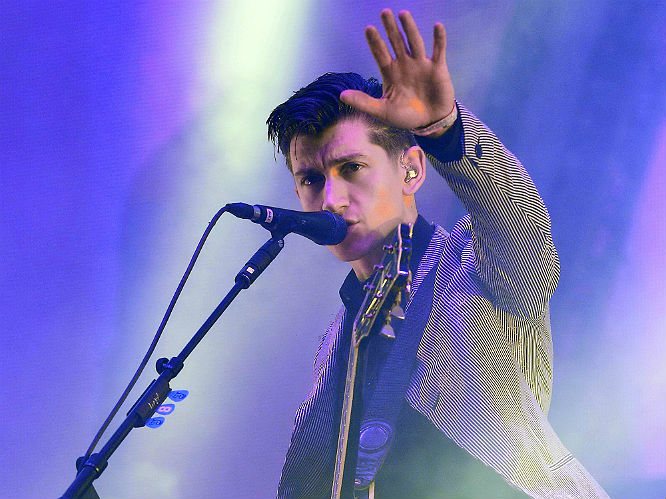
2013: One of the biggest and best received years' of Glasto's new Millenium, a stellar bill sees headline performances from Mumford & Sons and The Rolling Stones - while Arctic Monkeys return to headline for a second time and kick off their AM campaign. It was pretty triumphant, despite many critics of Alex Turner's new 'Elvis-style' bravado and 'American accent'.

2014: Despite hopes and rumours of Prince, Foo Fighters, Fleetwood Mac and (optimistically) Daft Punk and David Bowie, the final Saturday night headliners joining Arcade Fire and Kasabian were revealed to be Metallica. It's drawn a fair whack of criticism and controversy due to their hard-rock nature, but now all eyes are on Metallica to see if they can prove the world wrong.
![]()
More about: Glastonbury Festival



